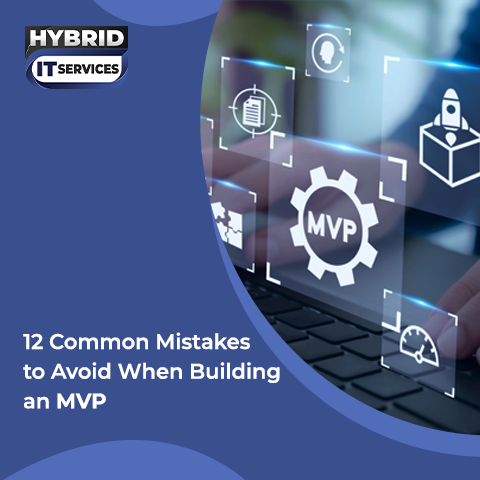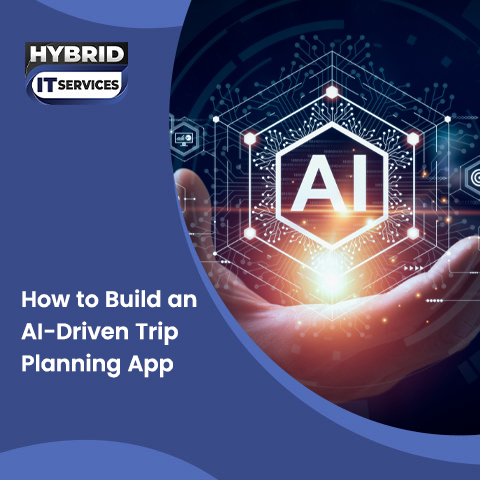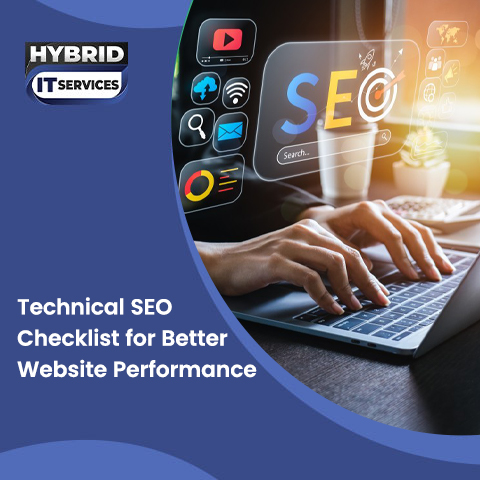Today, businesses rely on several pieces of technology to function effectively. From cloud platforms to internal software, customer management tools to financial systems, businesses find themselves often surrounded by an ever-expanding stack of digital solutions. Yet, as the number of solutions grows, so do the headaches of getting them to play nicely together.
That's where integration comes in.
Yet, not all integrations are created equal. Two buzzwords that frequently arise System Integration and Software Integration can appear to be similar but are different in practice, capability, and complexity. Hybrid IT Services educates companies about system integration vs software integration so they can make better technology decisions.
This article provides a detailed contrast of system integration and software integration—what each is, when to implement them, how they affect your company, and what to look for when deciding between the two.
What is System Integration?
System integration software is the act of assembling multiple independent subsystems. Both hardware and software into a single functional ecosystem that works as an integrated platform. The objective of system integration is to enhance business efficiency by facilitating information sharing and automated workflows between different components of an organization.
While stand-alone applications that do a single task are more common, an end-to-end integrated system is a one-source-of-truth; all the data flows between departments, users, and tools smoothly without duplication or inaccuracy.
Suppose your firm has an independent HR system, payroll application, and attendance-tracking program. Each operates independently. Here you may read the benefits of system integration: Top Benefits of System Integration for Businesses
What is Software Integration?
Software integration is specifically referring to integrating software applications, typically independent, standalone programs, so that they can communicate and exchange data.
As opposed to the system integration process, which can comprise several layers of an IT environment, software integration is application-level orientated. It seeks to facilitate communication between two or more applications addressing different business requirements but must coordinate with each other.
For instance, take a marketing team with an email marketing platform and a customer relationship management (CRM) system. It is most common in large-scale business organizations requiring coordination among several departments, physical locations, and technical environments.
System Integration vs. Software Integration: A Comparison
While both approaches enable process optimization and increased connectivity, system integration and software integration vary in scope, complexity level, and objective. The major differences are outlined below in a table:
When Should a Business opt for System Integration?
System integration tends to be the best option for companies that are larger in scale, have complex technical environments, or need to standardize processes and data across departments.
This is also the strategy required while consolidating IT systems in acquisitions, cloud migration hybrid, or creating centralized data warehouses for analytics. At Hybrid IT Services, we suggest system integration in the following situations:
- You have disparate legacy systems that are siloed and cannot communicate
- you’re employing a combination of on-premise and cloud tools
- You require enterprise-wide automation and centralized control
- you need compliance, auditability, and secure interdepartmental workflows
The drawback? System integration usually takes longer, is more expensive, and requires more technical know-how. It's an expense but one that repays itself in scalability and productivity over the long term. Let's discuss system integration services and how they work for enterprises: What Are Systems Integration Services? A Complete Guide
Comparing System Integration and Software Integration
Although both approaches aim to streamline processes and improve connectivity, system integration and software integration differ in scope, complexity, and purpose. The following table outlines their major differences:
|
Aspect |
System Integration |
Software Integration |
|
Definition |
Merging different hardware, software, and infrastructure components |
Linking software apps to share data and perform joint operations |
|
Scope |
Enterprise-wide—includes hardware, legacy systems, databases |
Limited to application-level integration |
|
Common Use Cases |
ERP-CRM-HRMS integration; IoT with inventory management |
CRM + Email tool; Accounting + eCommerce app |
|
Complexity |
High—often involves infrastructure changes and middleware |
Moderate—focused on API and app-level communication |
|
Typical Users |
Large enterprises, public sector organizations |
Startups, SMEs, department-specific integrations |
|
Tools Used |
Middleware, enterprise bus systems, data lakes |
APIs, third-party connectors, plug-ins |
|
Implementation Time |
Longer; often requires planning, testing, and vendor coordination |
Quicker; many off-the-shelf solutions available |
|
Maintenance Requirements |
Ongoing technical support, system monitoring, SLA management |
Less demanding; often vendor-managed integrations |
When software integration is a better option?
If your business objectives are less centred on growing departmental productivity, integrating cloud applications, or automating straightforward workflows, software integration is usually more cost-effective and sensible.
Software integration is effective when:
- You wish that your CRM would synchronize your support system with customer history
- You wish that new orders from your online store would sync your accounting app
- You wish to integrate your HR software with your attendance system
- You must automate follow-up emails on form submissions
Because numerous SaaS tools have built-in integration capacity, this method spares you the frustration of starting over with process rebuilding. It's also perfect when there is intense time-to-market pressure or when IT resources are limited.
Be, however, cautious of potential disadvantages like:
- Integration limits imposed by software vendors
- Third-party connectors depending on change or obsolescence
- Increasing complexity since more and more apps are hooked together in a "spaghetti" configuration
The Role of APIs, Middleware, and Integration Platforms
System and software integration frequently depends on shared technologies of some sort particularly APIs, middleware, and integration platforms.
- APIs (Application Programming Interfaces) are the most prevalent way for two apps to be connected. They enable apps to share data according to rules defined in advance.
- Middleware is a conduit that controls data transmission, authentication, translation, and compatibility among multiple systems, particularly in system integration initiatives.
- Integration platforms such as MuleSoft, Zapier, Dell Boomi, or Microsoft Power Automate provide intuitive dashboards for creating integrations with minimal or no code.
These resources are vital to providing seamless communication between systems, whether you're coordinating cross-departmental workflows or merely attempting to sync two apps.
Cost, Resource, and Maintenance Considerations
Another key consideration in deciding between system and software integration is the overall cost of ownership (TCO)—not only for development but also for ongoing maintenance, scalability, and support. We assist you at Hybrid IT Services in considering both short-term and long-term ROI prior to leaping in either direction.
|
Area |
System Integration |
Software Integration |
|
Initial Cost |
Higher, includes hardware upgrades, development, and implementation |
Lower, often limited to setup fees or subscription plans |
|
Time to Deploy |
Several weeks to months, depending on scope |
Days or weeks for simpler workflows |
|
Staffing Needs |
Requires experienced IT architects, developers, and integration specialists |
Can be handled by internal teams using no-code or low-code tools |
|
Maintenance Responsibility |
Managed internally or outsourced; high accountability |
Often handled by software vendors; lower internal overhead |
|
Scalability |
High—customized systems can grow with the organization |
Moderate—dependent on app capabilities and API limits |
|
Support Complexity |
Needs dedicated support structure for long-term success |
Easier to manage but may face limitations when platforms update or change policies |
Can You Use Both Methods Simultaneously?
Yes, and many companies do. Actually, the most adaptable and forward-looking approach usually is a mix of both. For instance, you may deploy your enterprise data warehouse (system integration) but also link some cloud-based applications that your teams use on a day-to-day basis (software integration).
This mixed model finds the middle ground between control and flexibility, enabling IT leaders to consolidate operations without smothering innovation at the team level.
Conclusion
System integration and software integration both play crucial roles in today's business processes. The trick is not to consider them as rivals but as complementary tools. if you want to bring together tools and automate team or between-few-applications workflows, then software integration is the more intelligent and cheaper option.
At Hybrid IT Services, we walk companies through this process of decision with clarity and technical expertise. Consult us now and let's streamline your technology and boost your performance.

.png)




